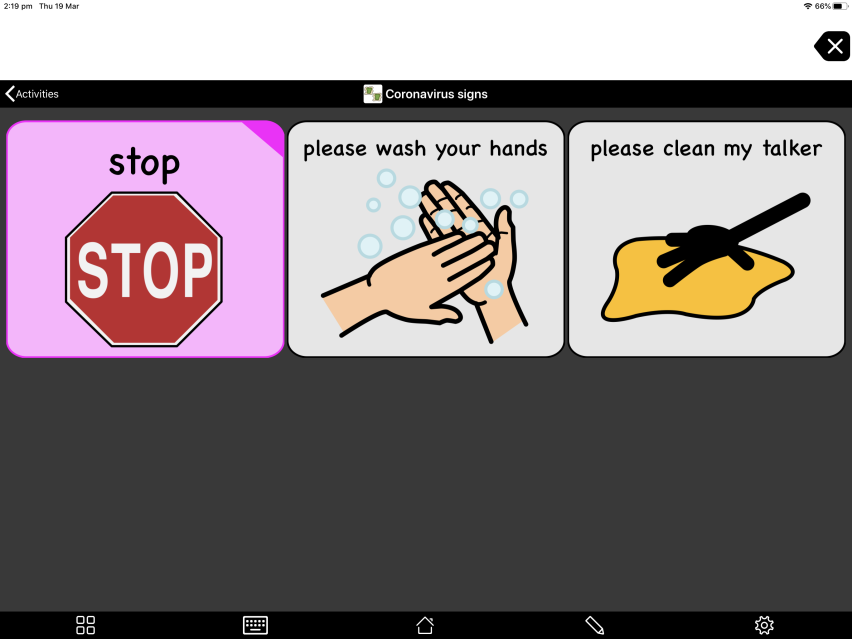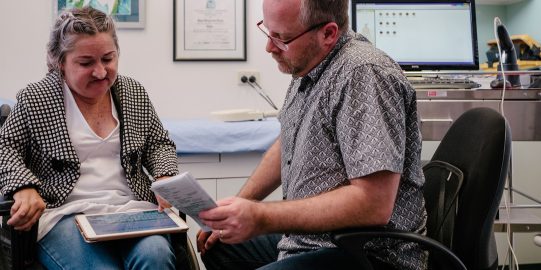Keep your AAC free from germs
AAC and AAC equipment is often hands on. The AAC device may be touched often by many people, not just the AAC user. AAC can be difficult to use effectively with social distance. This makes most AAC tools at high risk for transferring viruses and bacteria, including the coronavirus.
Disinfect devices
All devices need to be cleaned thoroughly.
In a hospital or other medical environment context, there are valid infection control issues. A hospital may object to you bringing an iPad in. However, the iPad can be effectively disinfected without damage to the device, according to the Journal of Hospital Infection. Howell et al. (2014) demonstrated that Sani-Cloth CHG 2% (chlorhexidine 2%/alcohol 70%) disinfecting wipes are an effective disinfectant and do not damage the iPad.
However, the researchers did not study iPads in protective cases. Remove your iPad from any protective case and disinfect it separately from the iPad itself. Every hospital has an infection control officer or specialist. Ask for help from this practitioner if needed.
For more for in-depth cleaning instructions Apple has released guidance on how to safely disinfect an iPad.
Everyone should take precautions
AAC users also need to rely on others to keep their AAC, germ free. They are dependent on others to wash their hands and take every precaution to prevent the spread of infection.
Support AAC users to have ways to ask or direct others around hygiene practices. Consider making a sign or adding a button that allows the AAC user to tell someone to wash their hands, or clean their device.






